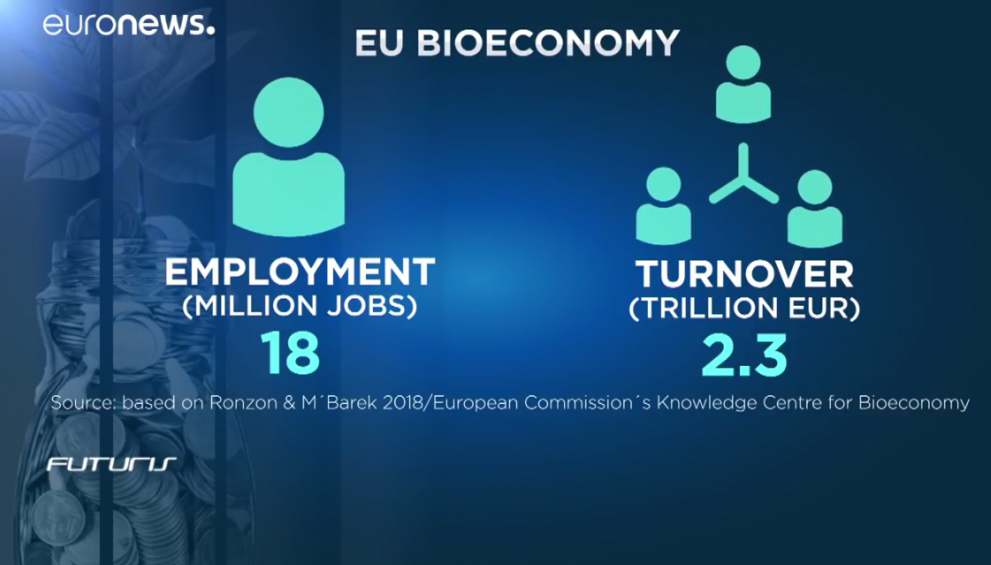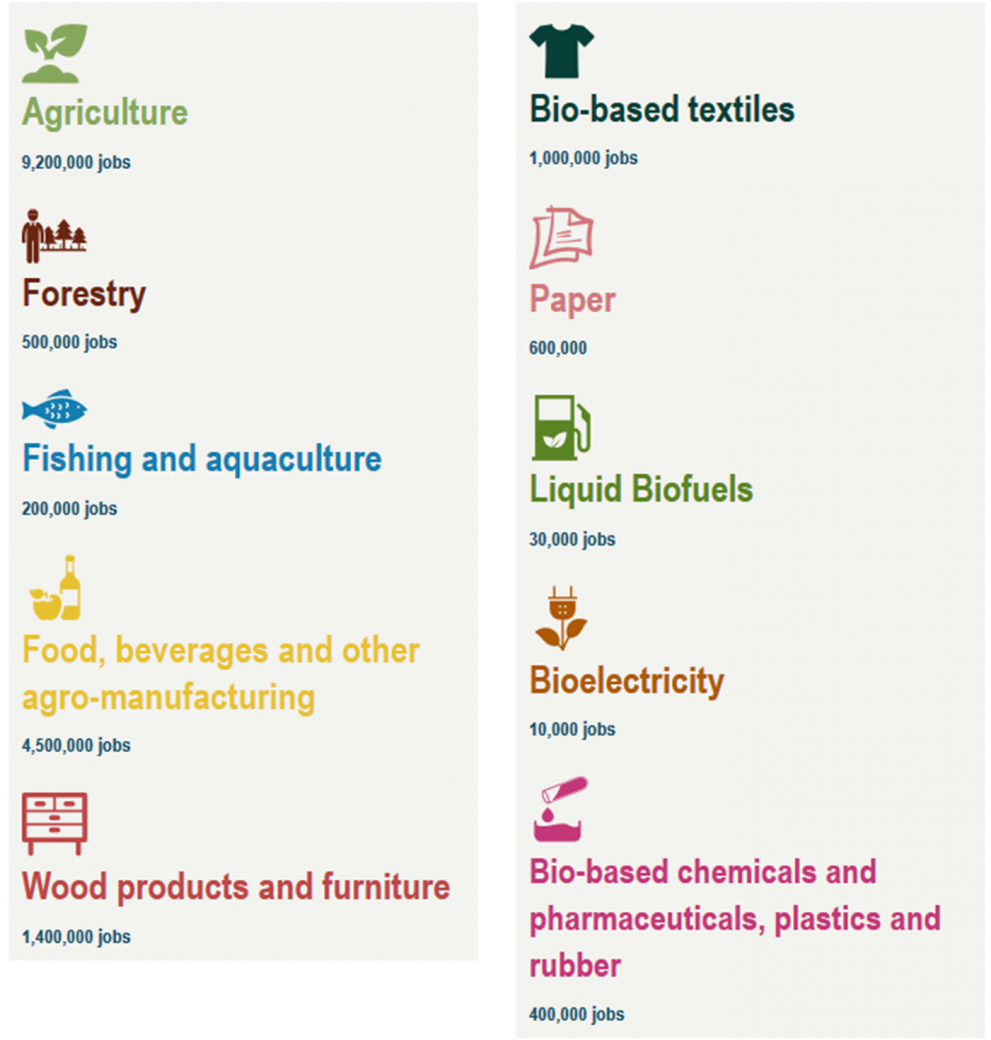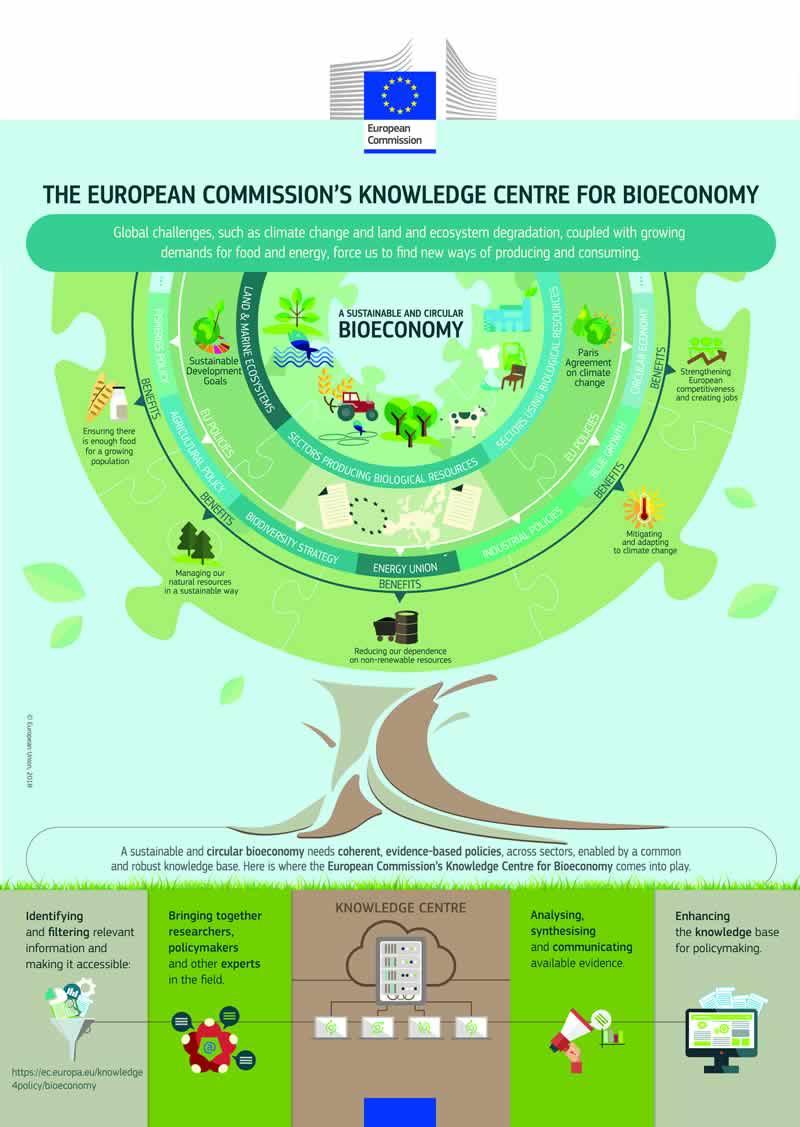
A recent Euronews Futuris episode on the European Union (EU) bioeconomy, renewable resources, bioplastics, and citizen science opens with a reference to JRC data on the European Commission's Knowledge Centre for Bioeconomy.
Using socioeconomic indicators developed by the JRC, the Futuris episode describes the huge economic potential of the EU Bioeconomy sector.

With an annual turnover of around €2 trillion, this bioeconomy employs 18 million people, and has recently invested almost €4 billion in research aimed at developing the bioeconomy while restoring the environment in sustainable ways.
The European Union is planning to invest another €10 billion in bioeconomy research by 2027.
The sector holds huge economic potential for agriculture, forestry, fisheries, food, bio-energy, and novel bio-based industries which rely on a myriad of bio-based products that are currently being developed and rolled out across the continent.
By developing biodegradable, compostable and bio-based alternatives to plastic, the bioeconomy sector also provides solutions to the environment's plastic pollution problem.
Europe produces around 25 million tonnes of plastic waste every year. Only a third is recycled, the rest is either incarcerated or ends up in landfills or polluting seas and oceans.
The Futuris episode visits innovative companies in Finland, Italy, Croatia and Norway that show how natural raw materials such as wood can be successfully used in an environmentally sustainably way to produce bio-based products and replace fossil resources in a circular and sustainable way, as called for by the European Commission's 2018 The EU's Bioeconomy Strategy and Circular Economy Action Plan.
The potential of pulp
The Äänekoski bioproduct mill in Finland produces around 1.3 million tonnes of pulp from trees every year, without using a single drop of fossil fuels. The whole system, which produces two and a half times more energy than it uses, is based on the idea of producing sustainable products using less water and less energy. Research is also being carried out on how to use the pulpwood in innovative ways, such as composites to replace plastics.
Biodegradable bags
Researchers in Novamont in northern Italy are developing and testing experimental technologies to create biodegradable and compostable bioplastics products such as shopping bags, plates, glasses and cutlery from ingredients such as corn starch, cellulose and vegetable oils as raw materials.
Bioplastics in packaging
Saponia, a leading detergent and personal hygiene products manufacturer in Croatia, uses bioplastics in their detergent packaging, which it plans to extend to its other products.
Wood-based bioproducts
Scientists at the Exilva biorefinery in Norway are trying to create wood-based bioproducts to replace those previously made with chemicals or oil-based products, for sectors as diverse as the automotive industry, the adhesive industry and cosmetics.
Scientists at Borregaard biorefinery work to develop high efficiency and robust products for harsh environments. They are currently developing 700 products based on natural raw materials, which managers say is a trend that should grow in the coming years.
Citizen science
Researchers hope their work will help reach the European target of transforming 10 million tonnes of recycled plastics into new products by 2025.
Along with research and innovation, awareness raising and education will play a crucial role in meeting that objective.
To that end, citizens and consumer associations are fully engaged together with researchers in "citizen science" to get an understanding of the social and market expectations of the circular economy in each European country, which can then help them better manage the limited resources of this planet, in a sustainable and circular way. This includes recycling and finding sustainable alternatives to fossil based chains, including the plastic chain.
Once citizens understand how important their consumer decisions are, they are empowered to help steer the market to more sustainable trends provide a wider array of choices.
Bioeconomy and bioplastics in the Joint Research Centre
The JRC is currently carrying out research into the bioeconomy and bioplastics sectors, and leads actions for the implementation of the EU Bioeconomy action plan such as the establishment of an EU monitoring system for the Bioeconomy.

The JRC also manages the European Commission’s Knowledge Centre for Bioeconomy, which provides a common and robust knowledge base to inform policies for a sustainable and circular bioeconomy.
Further information
- Futuris episode: How companies across Europe are creating sustainable products using no fossil fuels
- Ronzon & M'barek, (2018) Socioeconomic Indicators to Monitor the EU’s Bioeconomy in Transition
- European Commission's Knowledge Centre for Bioeconomy
- The EU's Bioeconomy Strategy
- Circular Economy Action Plan
Related Content
How companies across Europe are creating sustainable products using no fossil fuelsRonzon & M'barek, (2018) Socioeconomic Indicators to Monitor the EU’s Bioeconomy in Transition
Details
- Publication date
- 3 June 2019
